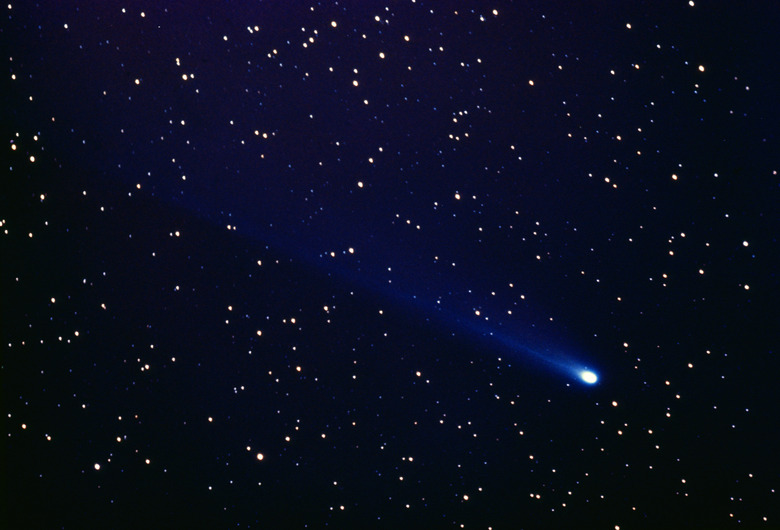Similarities Between A Comet And A Meteorite
Comets and meteorites have been known since ancient times, when they were seen as completely unrelated phenomena. A comet is a transient object seen in the sky, while a meteorite is a lump of rock found on the surface of the Earth. But despite their apparent differences, people now know that there are many similarities between comets and meteorites.
Comets
Comets
To the naked eye, a comet looks like a faint smudge of light in the sky. The name comes from the Greek for "long-haired," since people used to think they looked like stars with hair. In fact, comets are large chunks of ice and dust that orbit the sun along with the planets, but on much more elongated orbits. A comet can usually only be seen for a short time as it passes through the inner solar system. At this time, heating by the sun vaporizes volatile gases in the comet, leading to the formation of the visible tail.
Meteors
Meteors
Meteors, like comets, have been known since ancient times. They are often seen in the night sky as brief streaks of light, popularly known as shooting stars. These streaks of light are caused by fragments of interplanetary debris, most of which burn up as they hit the Earth's atmosphere at high speed. Space is full of such fragments, which are generically referred to as meteoroids. These originate from a number of different sources, with some meteoroids being pieces that have broken off a comet.
Meteorites
Meteorites
Occasionally a meteor entering the Earth's atmosphere is so large that it makes it all the way to the surface of the planet without burning up completely. The resulting rocky fragment is called a meteorite: a "stone that fell from the sky." Although many meteors originated in comets, such meteors are usually too volatile to survive the journey through the atmosphere. Instead, meteorites are more likely to be rocky fragments of asteroids or even volcanic ejecta from other planets.
Similarities
Similarities
A comet is a smudge of light seen in the sky, while a meteorite is a lump of rock that may be viewed and handled in a museum or science laboratory. Yet despite their apparent differences, there are similarities between them. Both are relatively small objects that have their origins in interplanetary space, orbiting the sun. A few meteorites may actually be fragments of comets, although such fragments are more likely to burn up as meteors in the upper atmosphere. A meteor is not unlike a comet in appearance from our perspective on Earth: a streak of light in the sky. But whereas a comet may be seen for several days, a meteor only lasts for a fraction of a second.
References
- The Oxford Dictionary of Astronomy, Second Revised Edition, 2012.
- New Scientist: Comets and Asteroids
- NASA: Solar System Exploration
Cite This Article
MLA
May, Andrew. "Similarities Between A Comet And A Meteorite" sciencing.com, https://www.sciencing.com/similarities-between-comet-meteorite-19611/. 24 April 2017.
APA
May, Andrew. (2017, April 24). Similarities Between A Comet And A Meteorite. sciencing.com. Retrieved from https://www.sciencing.com/similarities-between-comet-meteorite-19611/
Chicago
May, Andrew. Similarities Between A Comet And A Meteorite last modified March 24, 2022. https://www.sciencing.com/similarities-between-comet-meteorite-19611/
